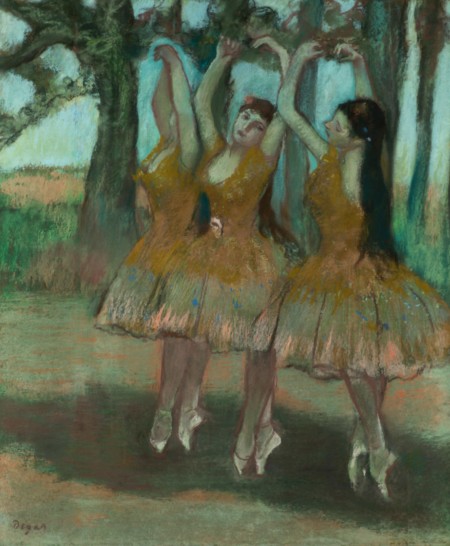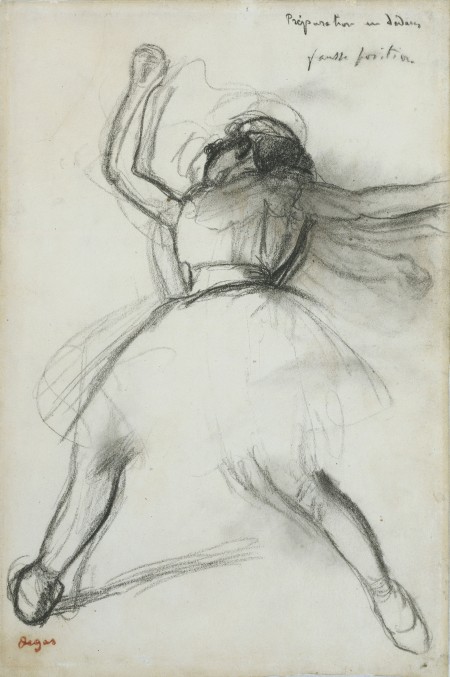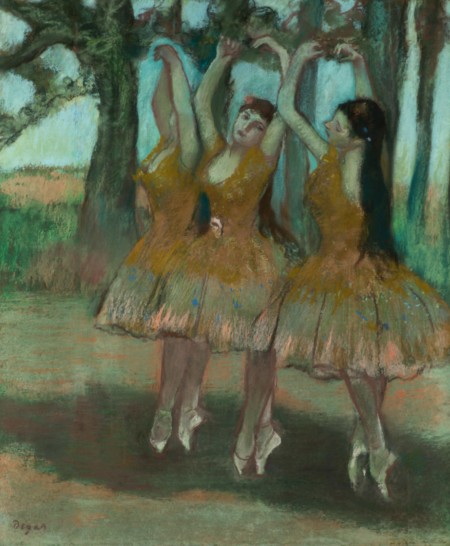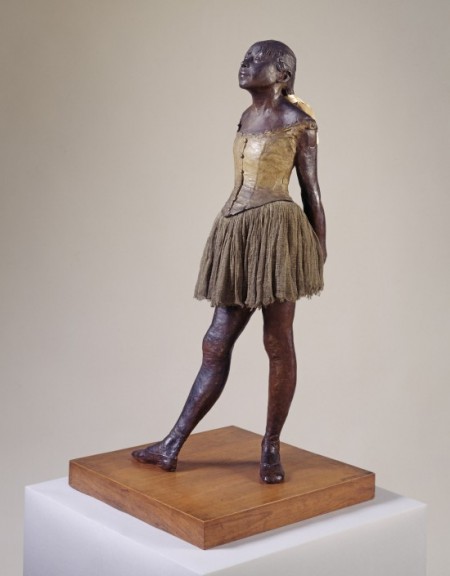
Born into a musical family in 19th Century Paris and graduating from the Lycee-Louise-Le-Grand with a baccalaureate in literature, Edgar Degas seemed destined to be infamously creative. The Royal Academy of Art’s newest exhibition is a celebration of Degas’ work; entitled ‘Degas and the Ballet: Picturing Movement’, the curators have put together an extensive collection of works which aptly reflect the artists obsession with classical ballet.
Walking through the exhibition’s mysteriously opaque glass doors, we are met by a darkened, cavernous room. Projected onto the opposing wall, three holographic ballerinas rotate and cast an eerie light over the exhibition’s entrance. Set out in chronological order, the exhibition begins with Degas’ earliest work where colour is used subtly; blues, creams and greys create blurred, almost ghostly, images of dancers immersed in motion. This is also seen in ‘The Rehearsal: Robert le Diable’ as it focuses on the front rows of audience and the orchestra, with the ethereal ballerinas faintly illustrated on a stage in the background of the painting.
What is most interesting about Degas’ work is the way that he is able to create a sense of movement in his paintings. Soft brush strokes enhance the delicate elegance of his dancers, and his fascination with posture and stance is evident through his experimentation with dancers in different positions. In ‘Study of Legs’, the dancers’ lower limbs are portrayed in a variety of positions, giving the impression that a frenzy of motion is about to ensue. Even in paintings of solo dancers, a contrast is drawn between the graceful dancers and their inanimate surroundings.
As Degas developed as an artist, he began to experiment with art forms and his focus shifted towards sculpture and photography. One of his most famous works, ‘Little Dancer of Fourteen Years’, is a detailed wax model of a young girl, arms decidedly placed behind her back, head and chest projecting upwards. It seems that Degas’ obsession with ballet lay mainly in the rehearsal scenes, where dancers focus on their bodies and are less aware of an audience watching them.
Degas’ work is timeless and will forever be a source of inspiration for all creative minds. This exhibition celebrates the work of a true genius, and provides its audience with a great understanding of Degas’ work as his style morphed throughout his career.
Exhibition at The Royal Academy of Arts ends 11th December 2011
http://www.royalacademy.org.uk/exhibitions/degas/
Sarah Birch



